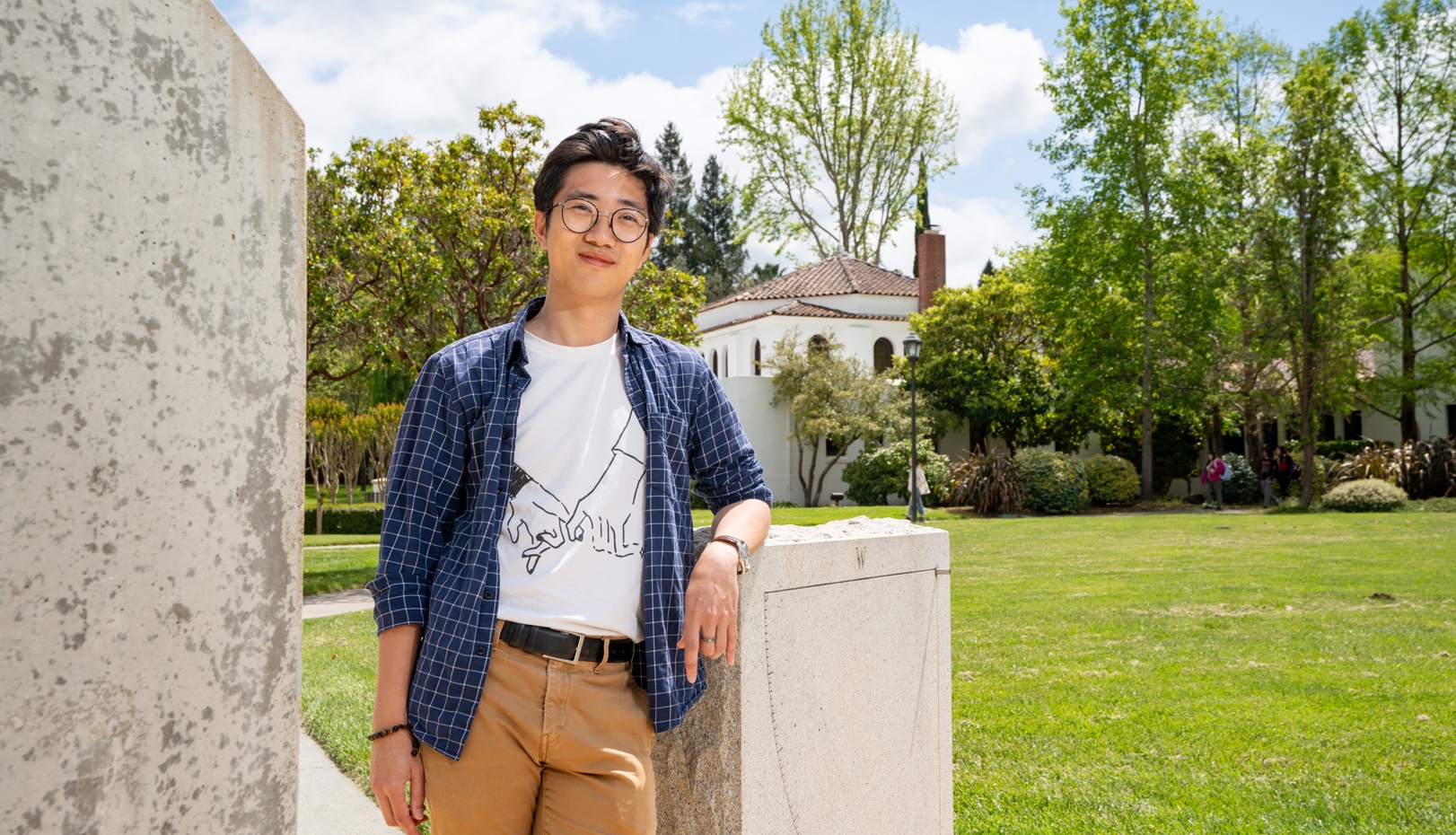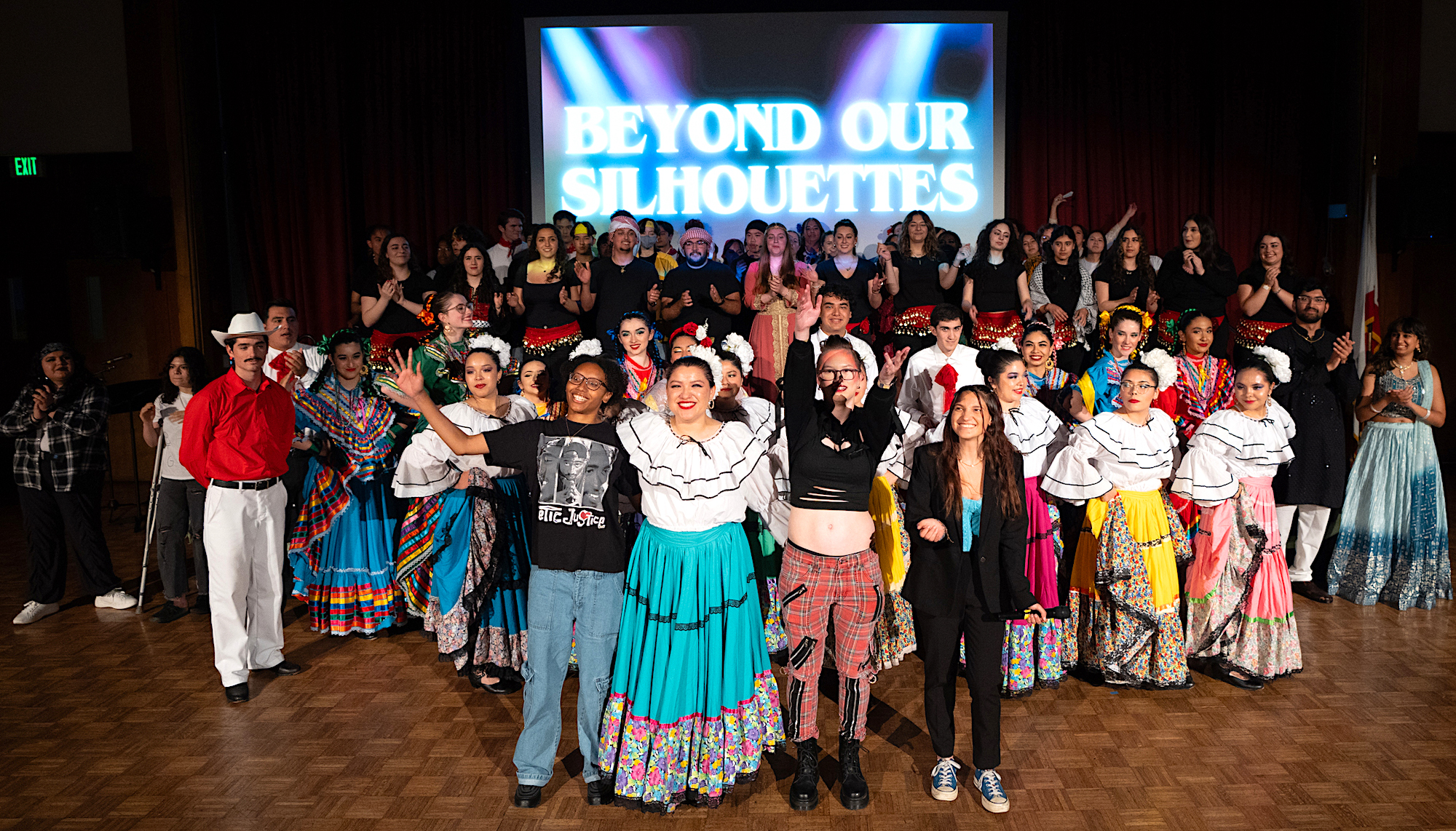
Breaking ground: A first-generation college student and the daughter of immigrants from Mexico, Psychology major Gabriela Canedo '27 credits the Intercultural Center with helping her explore "what it means to represent—or not represent—your community," she says. / Photo by Francis Tatem
Making Family History: Gabriela Canedo ’27 on Navigating her Latine Identity and ‘Creating Spaces of Healing’ Through the Intercultural Center
Thanks in part to the High Potential Program, Canedo has connected with her heritage in new ways. Now, as a Social Justice Advocate in the IC, she’s striving to offer opportunities for Gaels to engage in “self-understanding and self-work.”
When Saint Mary’s was established in 1863, its founder had first-generation students in mind. Joseph Alemany, San Francisco’s first archbishop, envisioned a college for the “children of Miners, Mechanics, and Agriculturists,” the working people of the fledgling state.
According to the most recent data, around one in three Saint Mary’s students today are trailblazers, the first in their family to pursue a college degree. For many first-generation students—“first-gens,” as they often refer to themselves—the journey to and through college brings unique struggles and surprises. We regularly ask first-gen Gaels to share, in their own words, their history, hopes, and advice for the next generation.
Today, we’re highlighting Gabriela Canedo ’27, a second-year student majoring in Psychology. A member of the High Potential Program, Canedo also works as a Social Justice Advocate in the Intercultural Center (IC), which celebrates its 20th anniversary this year. For Canedo, the milestone is an opportunity to keep doing what the IC does best: creating space for vital conversations and reflection.
Familia and America
I grew up in the Bay Area, and so did my parents, although they both immigrated here when they were younger. We still have family in Guanajuato, and I’ve visited many times, usually for Christmas and Easter. What I remember most is the food, and the air, which is just different… Cleaner, maybe? Everything smells like bread.
Aside from my family, I didn’t really have a Latino community growing up. Both of the schools I attended were very diverse, but most of my teachers were white. I definitely felt pressure to learn proper English and integrate into American society. It’s only now, in college, that I’m really starting to connect with that part of myself.

Choosing Saint Mary’s
Initially, I had my eyes set on big state universities, but when I went to tour them, I was intimidated. I saw parallels between the busyness of San Francisco—the stress, the cars honking at each other—and those crowded campuses. I knew I’d have to fight other students just to get the classes I wanted.
Visiting Saint Mary’s felt completely different. The nature of it, the small class sizes, stuck out. I liked the Lasallian values, all the hiking trails nearby, and the fact that it was so close to home. Plus, the financial package SMC offered me was pretty substantial. Overall, it wasn’t too big a leap for me.
"As a first-gen person, you're carrying yourself, and you're also carrying generations of people who wanted to be where you are. It's pressure for sure. It's also something to celebrate."
The High Potential boost
My parents didn’t go to college, so they couldn’t give any specific advice or warnings about the experience. It was a whole new environment for all of us. So, it was HP that really drew guidelines of what it looked like to be a college student and helped me feel comfortable.
The summer before my first year, I joined HP’s Summer Academic Institute for Leaders and Scholars (SAILS) program, which introduced us to the campus and the format of the Collegiate Seminar and other classes. I know I wouldn't have adjusted as quickly to my classes without SAILS.
I’ve also loved getting to know other first-gen students through HP. I have that community I didn't have before. And now, as a second-year in the program, I get to help first-year students who are where I was a year ago.

Finding space at the Intercultural Center—and creating her own
Early in my first semester, I went to a program called "Capitalizing on Diversity Through Education," hosted by HP and the Intercultural Center. It was meant to be an honest conversation about privilege and being first-gen at SMC. A lot of us there were students of color, and just the way everyone was speaking, so honestly… it seemed to me like the Intercultural Center was somewhere that truly embodied those core values of diversity, equity, and inclusion. So from then on, I was all in on the Center.
It’s the 20th anniversary of the IC. The entire team—student staff, the assistant director Kimiya Shokri ’19, and the new IC director Mitchell Foster—is really excited about all we have planned. I’m now a Social Justice Advocate with the IC, which means I’m focused on hosting important, often difficult conversations: about world events, or queerness, or race and privilege.
For me, it’s all about creating spaces of healing and drawing attention to things that aren't always discussed on campus. I’m trying to lean into a perspective that I borrowed from a former IC co-worker: If not you, then who? Who is going to do the work?
What Latinx Heritage Month means to her
I went to the Latinx Graduate Celebration last year, and it was just beautiful. I cried the entire ceremony because I love seeing my people succeed. As a first-gen person, you're carrying yourself, and you're also carrying generations of people who wanted to be where you are. It's pressure, for sure. It's also something to celebrate.
I also think, when it comes to Latinx heritage, there’s a lot of self-understanding and self-work to really embody what it means to represent—or not represent—your community. For me, the Intercultural Center has been a great resource for that.
Her encouragement to the Saint Mary’s community
Come to the IC! I think something everyone needs to understand—whether you’re white, Latinx, cisgender, nonbinary, student, faculty, staff—is that you shouldn’t have to experience something yourself to be affected by it. That’s what it means to be a community.
We can’t just say we support diversity, equity, and inclusion. We have to actually show up and live it.
(This interview has been condensed and edited for clarity.)
Hayden Royster is Staff Writer at the Office of Marketing and Communication for Saint Mary's College. Write him.




